Most likely any drill from this period found
today will look similar to the one on the photos below. I
included these photos to show how a drill can be transformed from
quite a revolting looking tool to a drill that is not only useful
but also pleasant to handle around the shop.
Before Clean-up
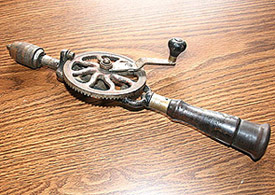
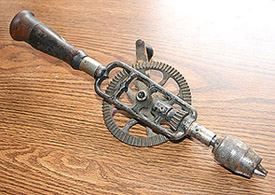
This is a typical No. 2 hand drill released in 1903. Well
known design based on one pinion and "Friction Roll" with rosewood
handles.
The main handle is designed for the first time with
flat cup and was advertised as an improvement in case drill is
used as a "breast drill". This particular specimen did not have side handle when it was
purchased, but I have a replacement handle that I will use in
final assembly.
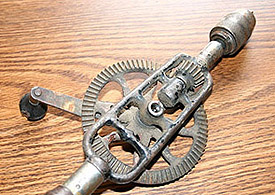
The view from the side-handle side. Although
not as impressive in appearance, this drill has all
parts in good order and can be restored to much better
and useable condition. |
|
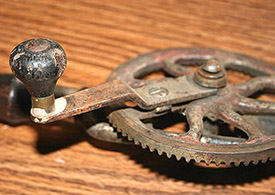 The gear is attached to the shaft with simple machine screw
resting on a washer. Crank handle has no marks of any
sort and the only marking for this model appears on a chuck.
Crank knob is made in Rosewood, just as the main and side
handles. |
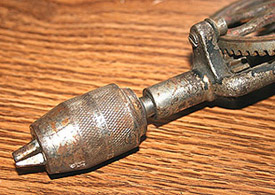 The drill is equipped with spring-less chuck developed and
patented by William H. McCoy. The patent was issued on
September 29, 1896 with number 568,539. The patent date is
stamped on the chuck's shell. Detailed review of this
chuck and it's construction
can be seen here. |
|
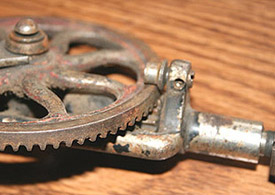
The well known "Friction Roll" is installed in the mounting
bracket. We can also see some nickel plating under the
paint. The spindle housing is not painted.
|
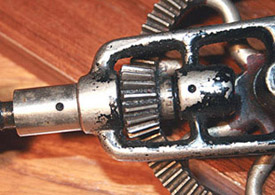 This is a view of the frame after light wash with kerosene.
The nickel plating is well intact and covers all frame body and
gear. |
|
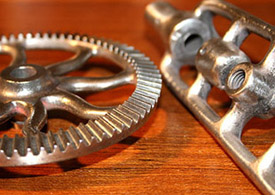
View of the frame and gear after all paint was removed.
Nickel plating is mostly intact and survived over hundred years.
|
On the following pages I will
describe in detail parts of this drill and their function. There are several unique design features of
this release that make it, in my view, one of the best Millers
Falls hand drills.
This review and my conclusions are based
on handling and restoring over five hundred drills made by
Millers Falls, Goodell-Pratt, and North Bros companies.